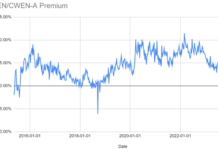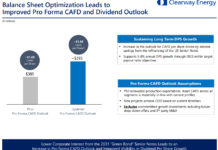by the Climate Bonds Team
Last month Toyota closed their second green bond for a whopping $1.25bn. Standard auto loans backed the issuance with proceeds to be used for electric and hybrid car loans; that means it’s more like a corporate green bond, where proceeds from a bond backed by existing (non-green) assets are directed green loans still to be made.
Sunrun issued $111m of solar ABS, and a small unlabelled energy efficiency ABS was also issued by Renew Financial and Citi for $12.58m. Sunrun and Citi/Renew Financial are examples of ABS where the assets backing the issuance are green. This type of green ABS introduces new low-carbon assets to the securitisation market, such as solar leases and energy efficiency loans.
Toyota issues second green ABS US$1.25bn, 1-5yrs, AA+/Aa3
The finance arm of Toyota issued their 2nd green ABS with an impressive US$1.25bn deal, after being the first to issue a labelled green ABS in 2014. There are 7 tranches with a range of tenors (1-5yrs) and coupons (0.3%-1.74%). Citi, Credit Agricole and Bank of America Merrill Lynch were the lead underwriters.
In line with Toyota’s last green ABS issuance, proceeds from the bond will go to fund a pool of leases and loans for low-carbon Toyota vehicles. To give you an idea of the size of the pool – Toyota’s first green ABS bond financed the purchase of 39,900 vehicles! Toyota sets clear criteria for eight different models of cars that can be funded:
- Gas-electric hybrid or alternative fuel powertrain
- Minimum EPA estimated MPG (or MPG equivalent for alternative fuel vehicles) of 35 city / 35 highway
- California Low-Emission Vehicle II (LEV II) certification of super ultra-low emission vehicles (SULEVs) or higher, which would include partial zero emissions vehicles (PZEVs) and zero emissions vehicles (ZEVs)
Citi and Renew Financial issues US$12.58m ABS backed by energy efficiency loans (6yrs, 3.51%, A), as part of WHEEL, a Pennsylvania Treasury initiative
Citi and Renew Financial issued US$12.58m of climate-aligned asset-backed securities. Although not labelled as green, we include this deal in our universe of unlabelled climate-aligned bonds.
The deal is the first ABS issuance arising from the US-based Warehouse for Energy Efficiency Loans (WHEEL). WHEEL is a public-private partnership established in 2014 with the State of Pennsylvania Treasury. The set-up is that approved local contractors offer low-cost loans to customers to finance energy efficiency projects, which are then bought into a financial warehouse by the company Renew Financial. To do this, Renew Financial uses a credit facility capitalised by a mix of public money, from the Pennsylvania Treasury, and private money, from the commercial bank Citi. This process continues until the aggregated amount of loans in the warehouse meet the size requirements of the capital markets, and the loans are bundles together and sold to institutional investors as securities backed by energy efficiency loans.
Brilliant to see private sector actors collaborating with state and local governments to get the deal off the ground. This is exactly the kind of collaborative setups we need to have to rapidly grow a green securitisation market, in the US and globally. Bravo all involved!
Sunrun issues $111m ABS backed by solar leases in two tranches (100m, 30 yr, 4.4%, A; 11m, 30 yr, 5.38%, BBB)
Sunrun Inc., a US provider of residential solar, issued $111m of “Solar Asset-backed Notes” in two tranches. $100m with a coupon of 4.4% rated A by KBRA, and $11m with a coupon of 5.38% rated BBB. Tenor for both tranches is 30 years. Credit Suisse was the lead underwriter for the deal.
The notes are backed solely by the cash flow generated by a portfolio of residential solar energy systems and related customer agreements. This transaction represents Sunrun’s inaugural issuance into the asset backed securitisation market. SolarCity pioneered issuance of ABS in the solar space in 2013 and 2014.
We’re looking forward to seeing more exciting green ABS issuances this year – this flurry of deals demonstrates the potential for green ABS to grow investment in a wide variety of small-scale low-carbon assets.
Digital Realty Trust issues US$500m green bond (3.95%, 7yr) for low-carbon buildings
Real Estate Investment Trust (REIT) Digital Realty Trust Inc. has issued its first green bond for US$500m to finance green buildings for data centres. The bond has 3.95% coupon and 7 year tenor. Bank of America Merrill Lynch, Citigroup, J.P. Morgan, RBC Capital Markets, and US Bankcorp are the deal underwriters.
The proceeds of the green bond will go to fund eligible green building projects. Instead of a second review from an independent party, Digital Realty has referenced existing green building standards, setting specific performance criteria that building projects must hit to be eligible. For example, buildings must have received, or be expected to obtain, LEED certification Silver, Gold or Platinum; BREEAM certification level Very Good, Excellent or Outstanding; BCA Green Mark rating Gold, GoldPlus or Platinum; Green Globes 3 or 4; CEEDA Silver or Gold or CASBEE B+, A or S.
Projects funded can be new or on-going building developments, renovations in existing buildings and tenant improvements. Any upgrade projects must improve energy or water efficiency by a minimum of 15% and be checked by an external party. Excellent that they have nominated a hurdle rate – something we should expect all green property bond issuers to do.
Digital Realty will report annually on their website covering the allocation of proceeds to eligible projects and status of green building certifications of the projects. An independent accountant will verify the company’s statement.
Next time we hope to see even more ambition with hurdle rates, and we’ll be keen to see more detail about the (excellent) commitment to onsite renewables used. Also, some buildinp;linkCode=as2&tag=wwwtomkoom-20″>The Party Line: How The Media Dictates Public Opinion in Modern China.









It’s intn
property commitments in US market demonstrated by this bond
outweigh such concerns for us.
Digital Realty have done a great job with their debut bond.
Latvenergo’s
EUR75m green bond issued last week (1.9%, 7 yr, Baa2) will use
proceeds for bioenergy, environmental preservation and
sustainable environment
The first Latvian green
bond from power utility Latvenergo
was upsized from EUR 50m to EUR75m (US$84.8m), with a fixed annual
coupon of 1.9%, 7-year tenor and rated Baa2 by Moody’s. The sole
underwriter was SEB.
CICERO’s second
opinion rated Latvenergo’s bond as “dark green”. Proceeds
will be used for energy efficiency projects in the electric power
grid and other projects (renewable energy, environment
preservation, biodiversity and R&D for sustainable
environment).
The renewable energy
projects focus on bioenergy power plants. Experts tell us that
using sustainable feedstock is crucial in bioenergy (see the Climate Bonds
Standard for more details). Latvenergo is using only local
Latvian wood, which is good to hear, although it would be good if
investors were given certainty on whether the feedstock for
Latvenergo’s bioenergy plants will be certified – from what we can
tell only 50% of Latvia’s forests are certified under the Forest
Stewardship Council.
Projects in the
environmental preservation and sustainable environment category
seek to minimise the environmental impacts of existing operations,
such as hydropower and the electric grid infrastructure. Safety
and flood management improvements for hydropower, protecting fish
migration around dams and monitoring electric power poles for
white storks nests (a protected species) are all eligible
projects.
R&D also falls into
the sustainable environment bucket. Proceeds from green bonds are
generally used for green assets rather than R&D into future
projects; we are interested to see how the green outcomes will be
reported next year. It’s worth noting that only up to 10% can go
toward this project type.
Overall: great to see
Latvia’s first green bond in the market!
European rail finance powerhouse Eurofima issue
unlabelled climate-aligned kanga bond for A$35m ($27m)
We’ve covered “unlabelled” solar and wind bonds in the past; we
will now start including other unlabelled bonds that are
climate-related. This week’s example is the large rail finance
entity Eurofima (a
supranational: a financing agency backed by mutliple governments)
issuing an A$35m 10-year bond with 3.9% coupon. It has a AA+ and
Aa1 rating from S&P and Moodys respectively.
Rail infrastructure is a key part of low-carbon transport, since
rail is far superior on emissions performance compared to
road-based travel. According to our 2015 State of the Market
report there are $418.bn of low-carbon transport bonds
outstanding, mainly in the unlabelled climate-aligned bond
universe. So plenty of opportunities around for investors.
——— The Climate Bonds Team
includes Sean Kidney, Tess Olsen-Rong, Beate Sonerud, and
Justine Leigh-Bell.
The Climate Bonds
Initiative is an “investor-focused” not-for-profit
promoting long-term debt models to fund a rapid, global
transition to a low-carbon economy.